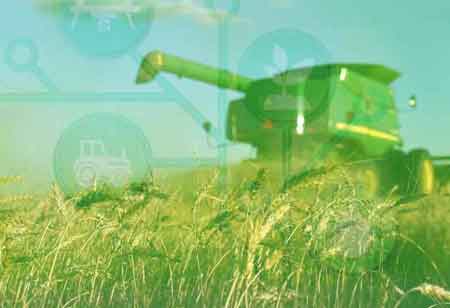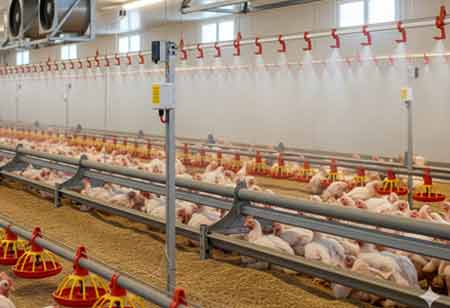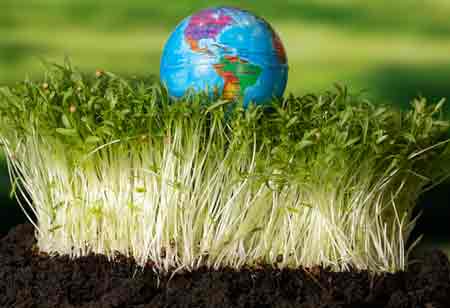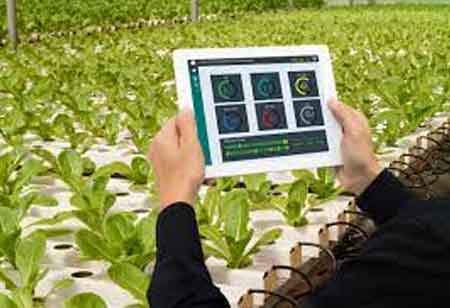Thank you for Subscribing to Agri Business Review Weekly Brief
Leading Technologies Transforming Aquaculture Practices
The future of aquaculture relies on breakthrough technologies, which will enhance sustainability, efficiency, and food security through innovations like automation, AI, and improved water and resource management.

By
Agri Business Review | Friday, October 04, 2024
Stay ahead of the industry with exclusive feature stories on the top companies, expert insights and the latest news delivered straight to your inbox. Subscribe today.
The future of aquaculture relies on breakthrough technologies, which will enhance sustainability, efficiency, and food security through innovations like automation, AI, and improved water and resource management.
FREMONT CA: The aquaculture industry is undergoing a technological transformation driven by the need to improve efficiency, sustainability, and resilience in fish farming practices. As global demand for seafood surges, innovative solutions are emerging to meet these challenges while minimising environmental impact. Advanced water management systems, precision monitoring tools, and cutting-edge genetics are reshaping how aquaculture operations are managed, enabling farmers to optimise growth conditions and mitigate risks. These breakthroughs enhance production and align with the growing emphasis on environmental stewardship, ensuring that aquaculture contributes to global food security without compromising the health of aquatic ecosystems.
Innovative Technologies in the Industry
Water Quality Monitoring Technologies: Maintaining optimal water quality is paramount in aquaculture, as the well-being and growth of aquatic species rely on a pristine marine environment. Key factors such as dissolved oxygen levels, pH balance, temperature, and nutrient concentrations must be monitored and controlled to prevent stress, disease, or mortality among farmed fish or shellfish. Any fluctuations in water quality can harm overall health and productivity.
Sensors for Precise Monitoring: The deployment of sensors has modified water quality monitoring in modern aquaculture. These devices can be strategically placed throughout the facility to measure crucial parameters like dissolved oxygen, pH, ammonia levels, and temperature. Sensors provide real-time data on water quality conditions, allowing farmers to detect abnormalities promptly and take corrective actions to safeguard their livestock's health.
Real-Time Data Analytics for Enhanced Insights: Integrating real-time data analytics software in aquaculture operations has become a game-changer for farmers seeking to optimise water quality management. Farmers gain valuable insights into trends and patterns affecting the aquatic environment by analysing continuous data streams collected by sensors. This proactive approach enables early detection of potential issues and the implementation of measures to maintain optimal water quality conditions.
Genetics and Breeding Innovations: Genetics and breeding technologies have transformed modern aquaculture, offering innovative solutions to enhance productivity and resilience in fish farming operations. Through strategic selective breeding programs, aquaculture practitioners can target specific traits in fish species, such as disease resistance and growth rates, to improve overall quality and yield.
Selective Breeding for Desired Traits: Selective breeding plays a pivotal role in aquaculture by favouring specific genetic characteristics in fish populations over successive generations. Aquaculturists can carefully choose breeding pairs with desirable traits to accelerate the development of superior fish stocks. This time-efficient process makes fish better equipped to grow in aquaculture settings.
Genetic Manipulation Techniques: Researchers are exploring genetic manipulation techniques to advance fish farming capabilities beyond traditional selective breeding. Methods like transgenesis and genomic editing allow scientists to introduce specific genes or alter existing ones to confer advantageous traits in fish species. These technologies open possibilities for creating disease-resistant and environmentally adaptable fish varieties.





